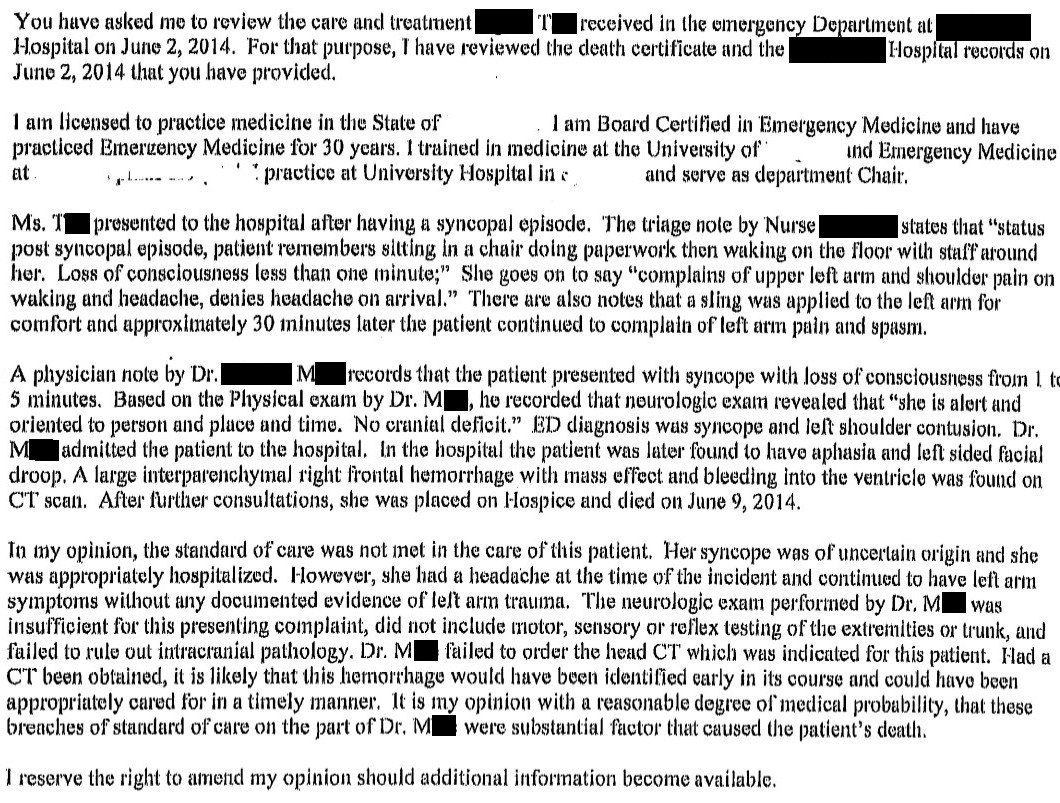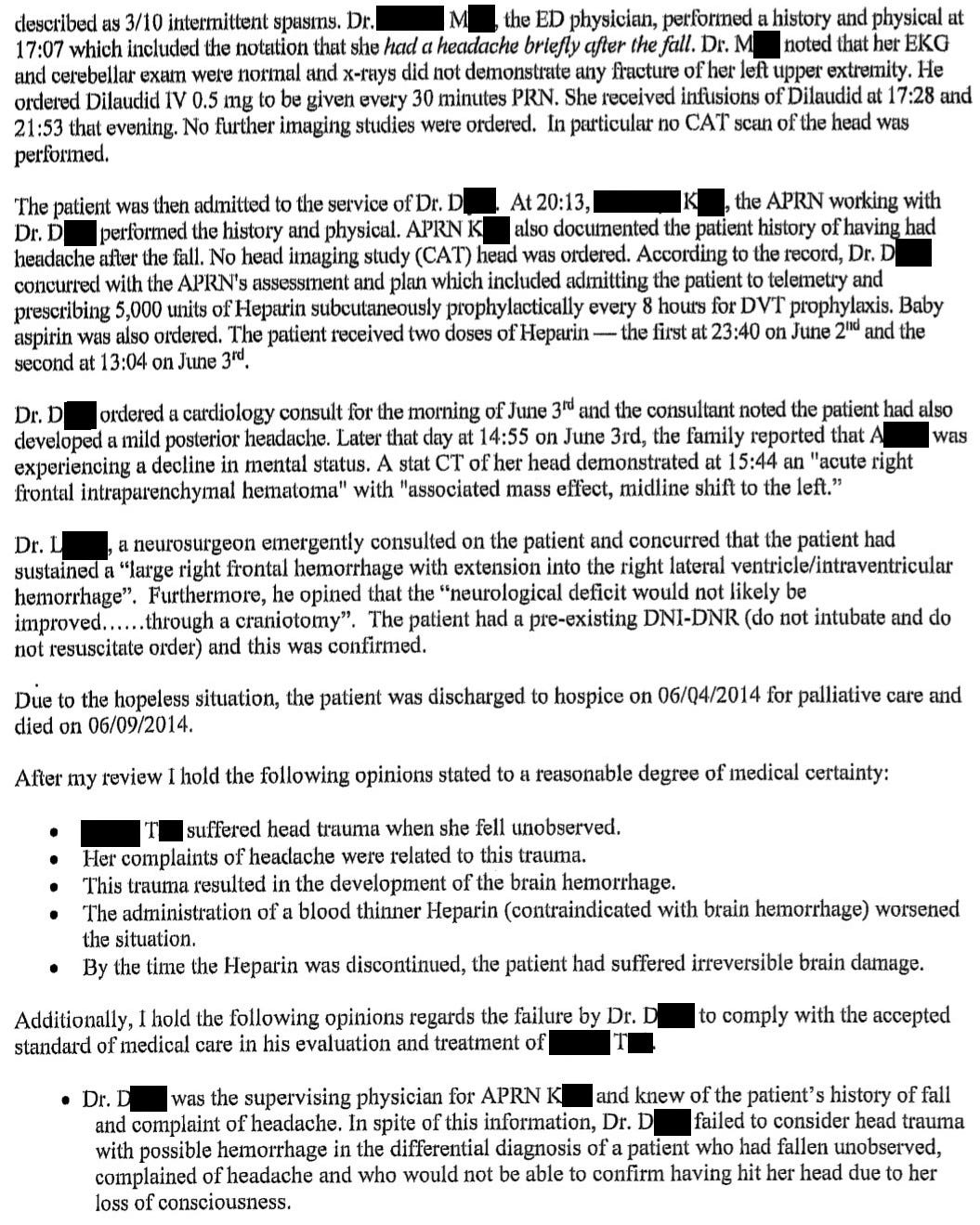Expert Witness Case #11
A 69-year-old woman (Ms. T) was at work, sitting at a desk, when she had a sudden syncopal episode and regained consciousness lying on the ground. The fall was unwitnessed so exact details were unavailable, but she had dizziness, headache and left arm pain when she presented to the ED. She was seen by Dr. M. She was not anticoagulated. A lab workup and EKG were completed and did not reveal any remarkable findings.
The hospitalist Dr. D was consulted. An APRN, Ms. K, interviewed and admitted the patient. She was admitted to the floor for observation and cardiology was consulted as well. She was started on DVT prophylaxis with heparin and also given aspirin.
The next day, the family noted that her mental status was declining. A head CT was obtained and showed a large intraparenchymal bleed. Neurosurgery (Dr. L) was consulted but intervention was felt to be futile and the patient had a DNR/DNI order. She was discharged to hospice and died several days later.
The lawsuit was filed against the EM doctor, the hospitalist, the hospitalist APRN, the hospitalist’s medical group, and the hospital itself. 2 physicians were hired as expert witnesses. The EM doctor’s opinion is shown here.

A hospitalist was also hired.



The plaintiffs offered to withdraw the case in return for $1,000,000 settlement from the hospital and a $1,000,000 settlement from the hospitalist’s medical group. Their initial offer was rebuffed, but the case was ultimately settled prior to trial. The final settlement amount was confidential and is not public record.


MedMalReviewer Opinion:
1) The neurologic exam is important in syncope and trauma patients, and should be thoroughly documented.
2) Ordering a head CT could be justified as part of the syncope workup or as part of the workup for the traumatic head injury. Head CTs for syncope are a hot topic of discussion given the generally low yield. All major clinical decision rules for traumatic injuries would have suggested the need for a CT head.
3) It is worth noting the diagnostic momentum seen in this case. The workup started by the ED is often continued on the inpatient floor; it can be difficult for downstream providers to think outside of the workup that has already been completed.



